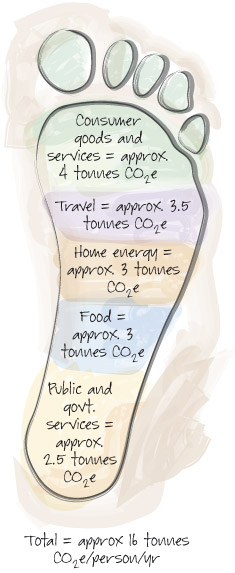1.2 The carbon footprint boundary
Depending on where you draw the boundary, the carbon footprint can apply to: an individual or household; an organisation, event or product; a city, region or country. In this course you will mainly be considering the footprints of individuals, households and the countries they inhabit.
But even then the boundary needs to be defined carefully. Sometimes the carbon footprint is taken to mean an individual’s or household’s direct CO2 emissions, mainly from burning fossil fuels for home heating and car driving. But this leaves out their indirect CO2 equivalent emissions arising from the production and distribution of the food, drink and other goods and services they consume, ranging from clothes and electronic products to banking, medical services and Open University modules.
Again depending on the boundary, these indirect emissions often include only those arising from the food, goods and services produced within the country where people live. But they may also include the emissions ‘embedded’ in imports; for example, the emissions produced by the ‘supply chain’ of mines, farms, factories, trucks and ships involved in making and transporting the food, cars and computers that Britain imports from the EU and China.
Whichever measure you choose, the ‘footprint’ image is used to suggest an individual or group treading on or occupying the Earth (Figure 2). It implies that the Earth can’t indefinitely support the lifestyle of that individual or group, and if they are to live sustainably, they’ll have to lighten their footprint.

